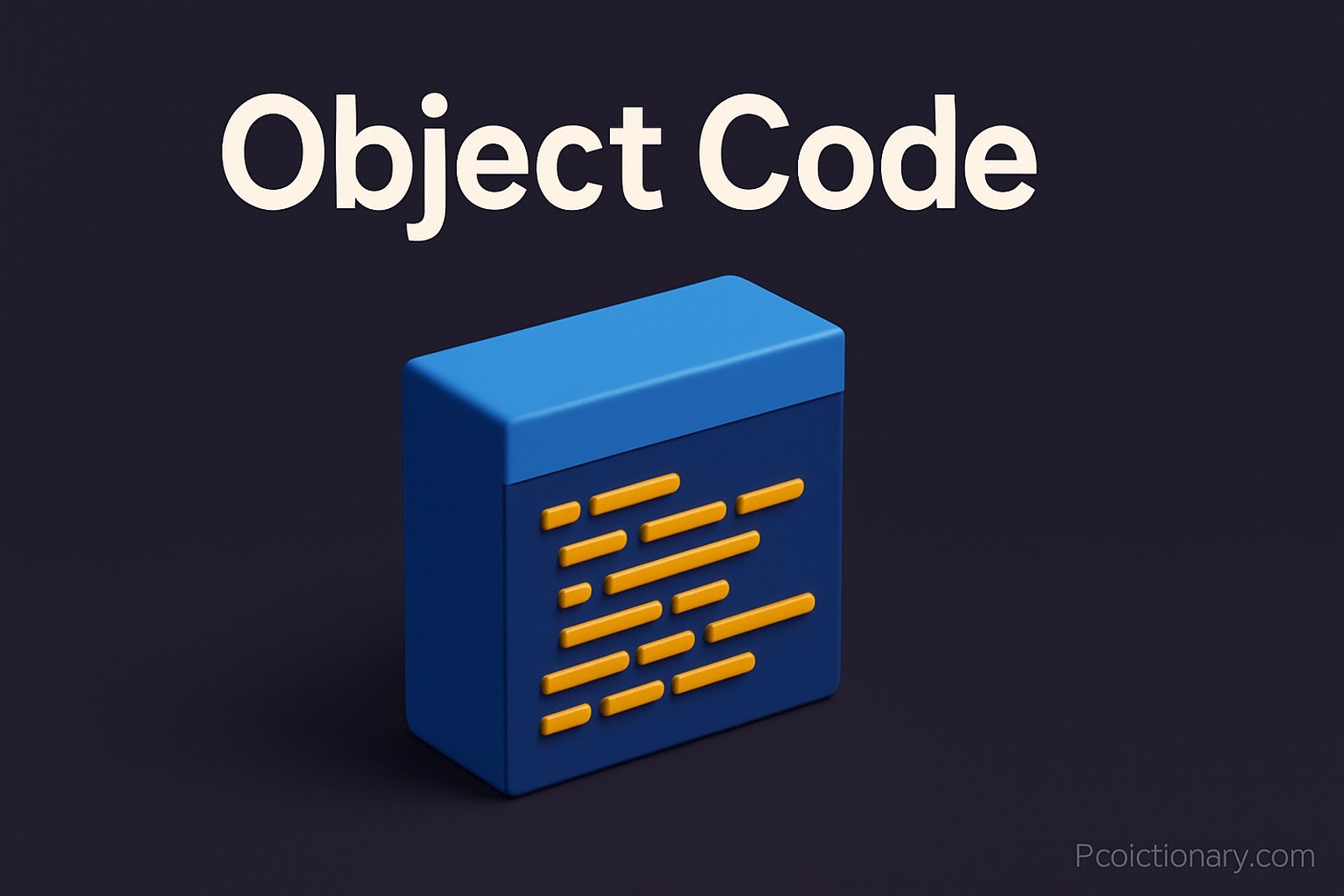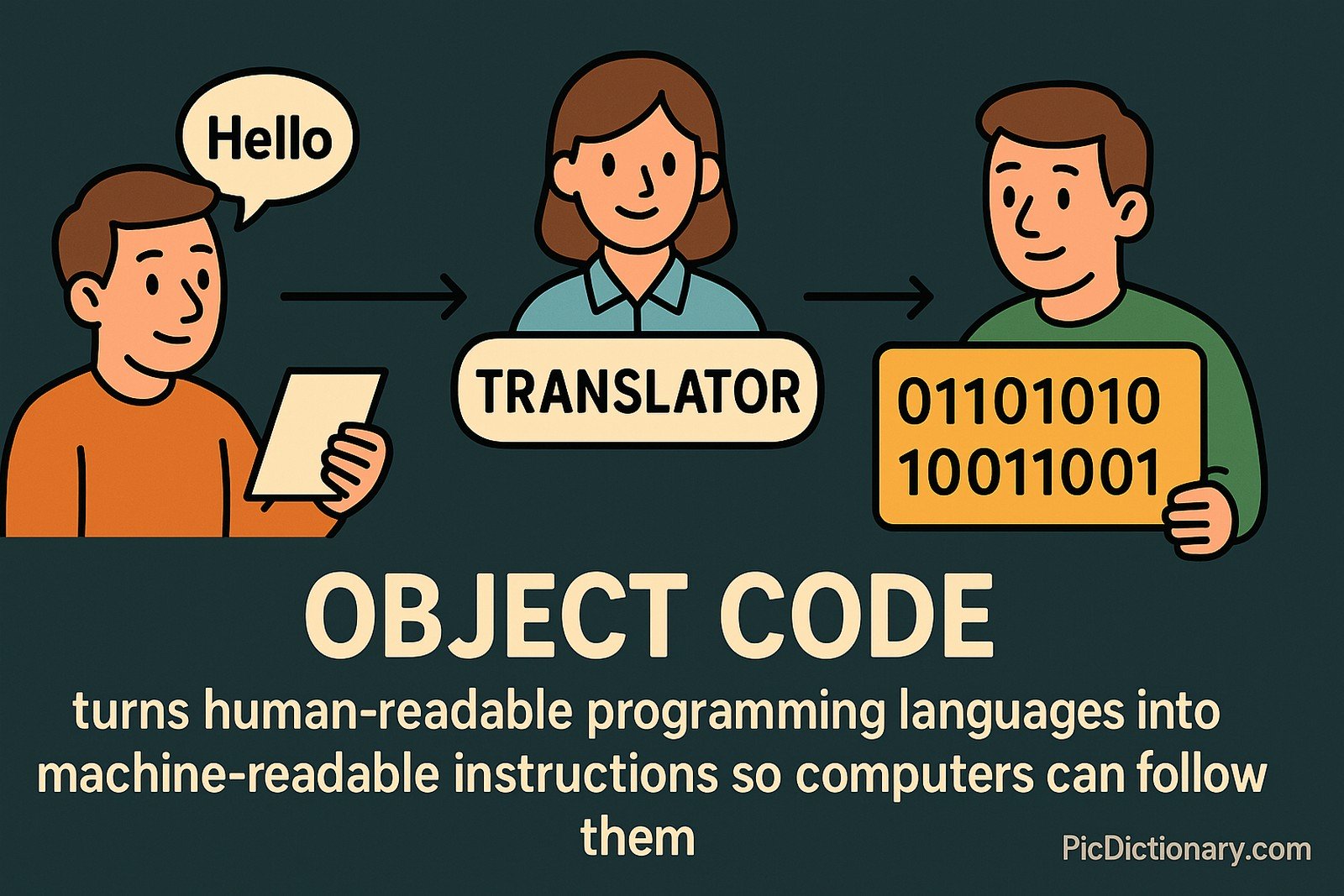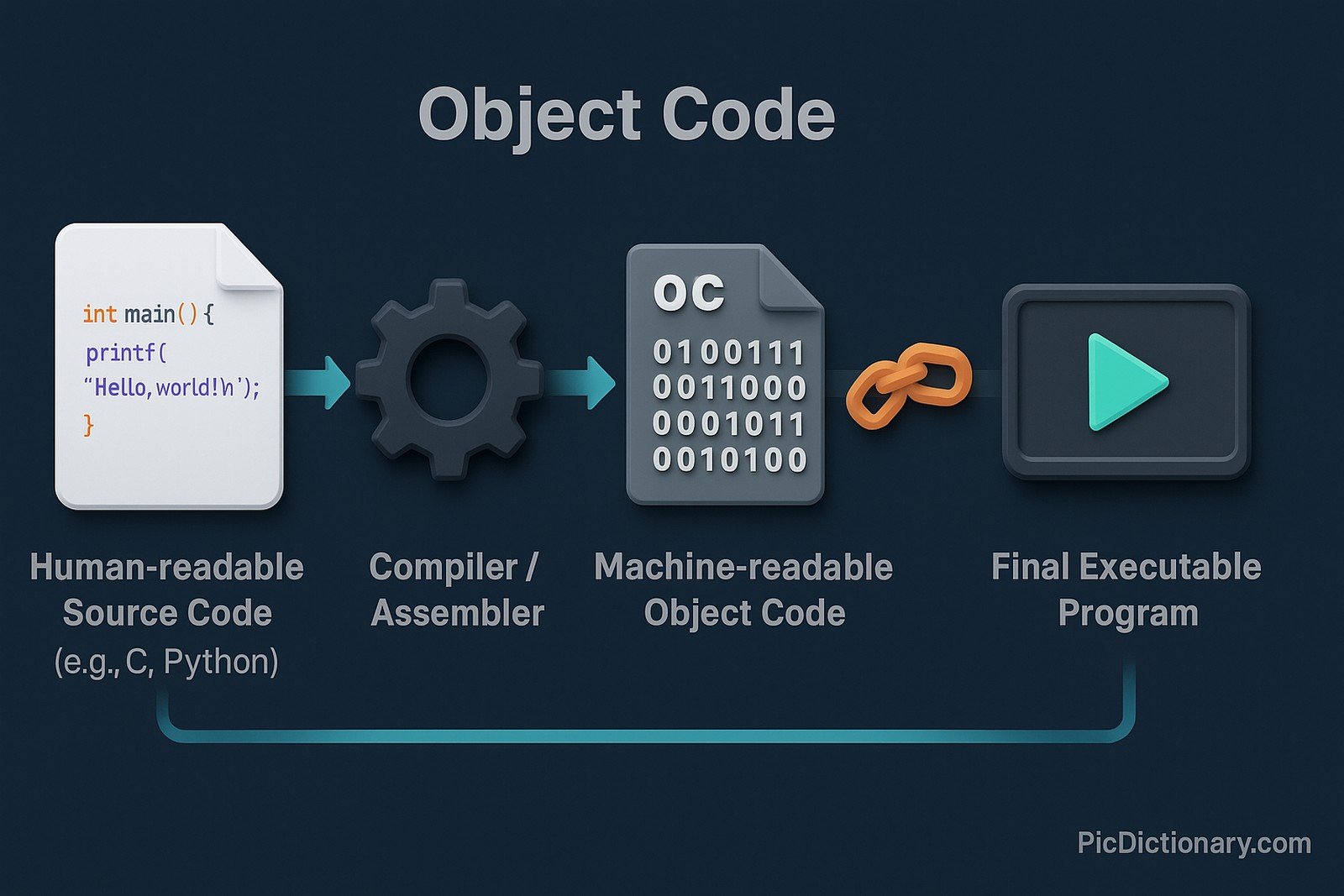Object Code

Quick Navigation:
- Object Code Definition
- Object Code Explained Easy
- Object Code Origin
- Object Code Etymology
- Object Code Usage Trends
- Object Code Usage
- Object Code Examples in Context
- Object Code FAQ
- Object Code Related Words
Object Code Definition
Object code is the machine-readable output of a compiler or assembler that translates human-readable source code into a format executable by a computer. It consists of binary instructions that the processor can directly interpret and execute. Object code is often stored in object files and linked together with other object files to create a final executable program.
Object Code Explained Easy
Imagine you’re writing a letter in English, but your friend only understands numbers. You ask a translator to convert your words into a number-based language that your friend can understand. That’s what object code does—it turns human-readable programming languages into machine-readable instructions so computers can follow them.
Object Code Origin
Object code originated with the advent of early computing languages like Assembly and Fortran in the 1950s. As programming evolved, compilers were developed to translate high-level code into object code, making software development more efficient and accessible.
Object Code Etymology
The term “object code” comes from its role as an intermediate product ("object") created by the compilation process before becoming an executable program.
Object Code Usage Trends
With the rise of high-level programming languages, object code remains essential in software development. However, the demand for Just-In-Time (JIT) compilation and interpreted languages has led to more dynamic execution models. Still, object code is widely used in system programming, embedded systems, and performance-critical applications.
Object Code Usage
- Formal/Technical Tagging:
- Machine Code
- Compilation
- Executable Files - Typical Collocations:
- "Object code generation"
- "Linking object files"
- "Optimizing object code"
- "Object code execution"
Object Code Examples in Context
- When you compile a C program, the compiler generates object code before linking it into an executable file.
- Malware analysts often reverse-engineer object code to understand how viruses operate.
- Embedded systems use optimized object code to run efficiently on limited hardware.
Object Code FAQ
- What is object code?
Object code is the compiled version of a program, translated into machine-readable instructions for a computer. - How is object code different from source code?
Source code is written in human-readable programming languages, while object code is the machine-level translation of that code. - Why is object code important?
It allows programs written in high-level languages to be executed by a computer's processor. - Can object code be modified?
While object code can be edited through techniques like reverse engineering, it’s much harder to modify than source code. - What role does object code play in software development?
It serves as an intermediary step between source code and the final executable program. - What tools generate object code?
Compilers (like GCC, Clang) and assemblers translate source code into object code. - Is object code platform-independent?
No, object code is usually specific to the processor architecture and operating system it was compiled for. - How does object code relate to assembly language?
Object code is the binary form of machine instructions, while assembly language is a human-readable representation of these instructions. - Can object code be directly executed?
No, it must first be linked into an executable file. - Does interpreted code have object code?
Not in the traditional sense, but Just-In-Time (JIT) compilers may generate object code dynamically during execution.

Object Code Related Words
- Categories/Topics:
- Compilation
- Machine Code
- Programming Languages
Did you know?
In the early days of computing, programmers had to write object code by hand using punch cards before compilers automated the process. This tedious method made even small errors difficult to correct!
PicDictionary.com is an online dictionary in pictures. If you have questions or suggestions, please reach out to us on WhatsApp or Twitter.Authors | Arjun Vishnu | @ArjunAndVishnu

I am Vishnu. I like AI, Linux, Single Board Computers, and Cloud Computing. I create the web & video content, and I also write for popular websites.
My younger brother, Arjun handles image & video editing. Together, we run a YouTube Channel that's focused on reviewing gadgets and explaining technology.



Comments powered by CComment